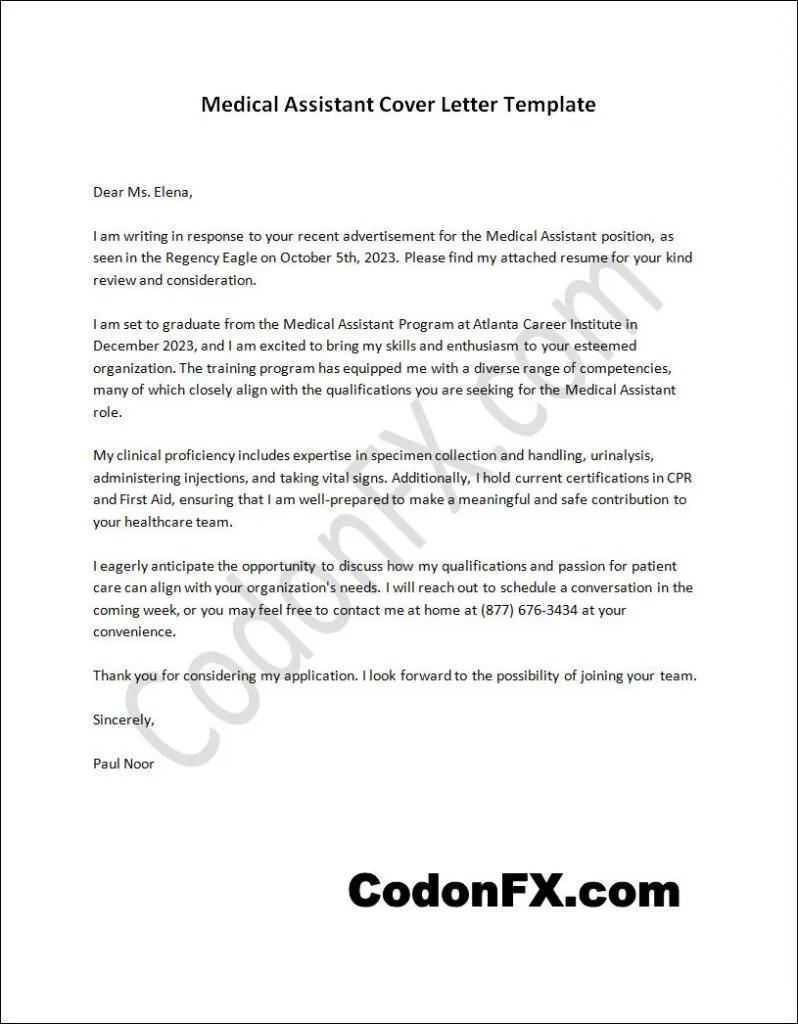Crafting a Medical Assistant Cover Letter
A compelling medical assistant cover letter is your first introduction to a potential employer, and it’s a crucial step in securing your dream job. It is your chance to highlight your skills, experience, and personality in a way that a resume alone cannot. To stand out from the competition, your cover letter must be well-written, tailored to the specific job, and free of errors. This guide provides you with the essential components and expert tips to craft a cover letter that grabs the attention of hiring managers and increases your chances of landing an interview. By following these guidelines and examples, you can create a professional cover letter that effectively showcases your qualifications and helps you achieve your career goals in the healthcare field.
Header Section
The header of your medical assistant cover letter is crucial for providing essential contact information, ensuring that the employer can easily reach you. It should be clear, concise, and professional. Proper formatting also demonstrates attention to detail, a quality highly valued in healthcare settings. Include your full name, address, phone number, and professional email address. This information ensures that recruiters can quickly contact you to schedule an interview or request further details. Accuracy is key to avoid any delays in communication, so double-check all details before finalizing your letter.
Contact Information
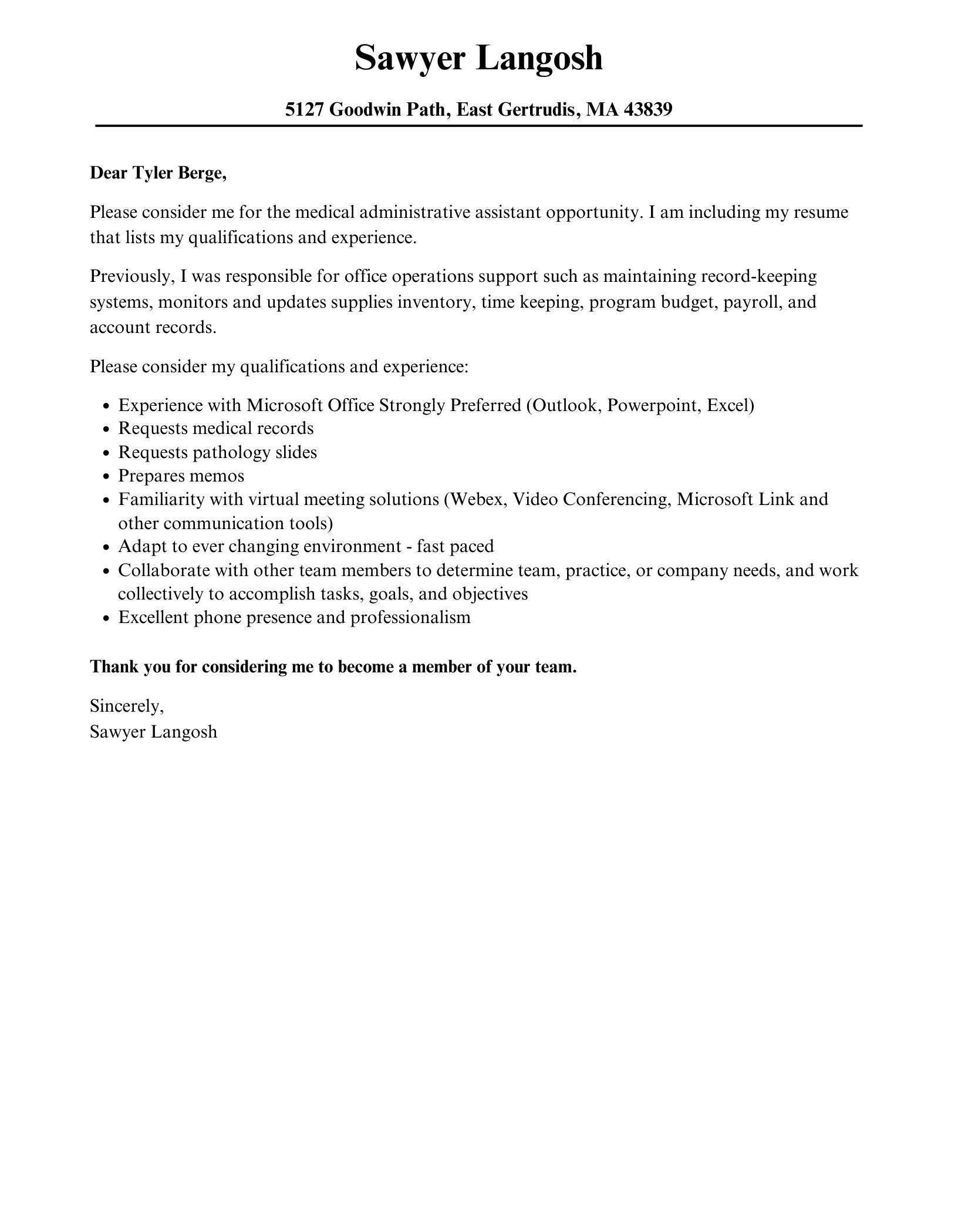
Begin with your full name at the top, followed by your complete address. Ensure your address is current and accurate. Next, provide a phone number where you can be easily reached during business hours or where you regularly check messages. Lastly, include a professional email address. Avoid using informal or unprofessional email addresses; instead, create an address that includes your name for a more polished appearance.
Date
Immediately below your contact information, include the current date. This helps the employer know when the letter was written and submitted. The date should be formatted consistently, either in month/day/year format (e.g., January 20, 2024) or day/month/year format, depending on your preference or the standard in your region. Using the current date shows that your application is up-to-date.
Recipient Information
Start the letter with the recipient’s name and title if possible. Address the letter to the hiring manager by name. If you’re unsure, research the company’s website, LinkedIn, or call the clinic to find out. If you are unable to find the name, use a professional salutation such as ‘Dear Hiring Manager’. Include the recipient’s title and the clinic’s name and address. This personal touch shows that you have done your research and are genuinely interested in the specific opportunity.
Body of the Cover Letter
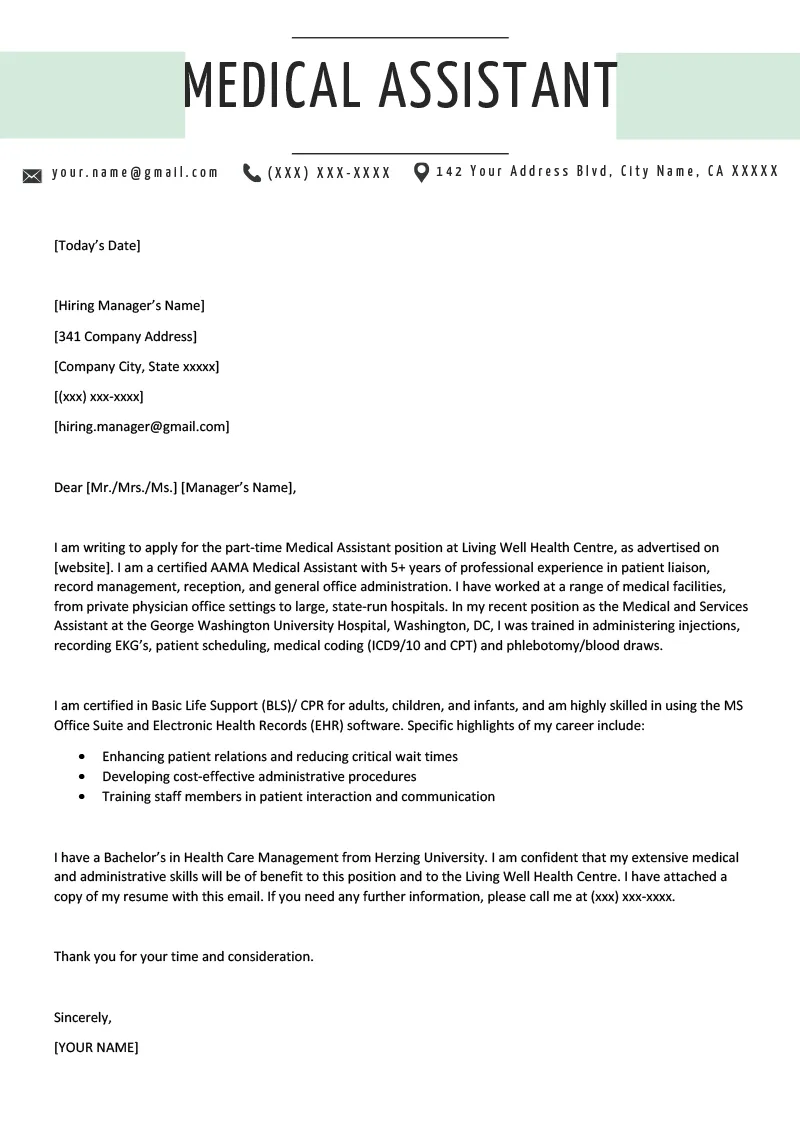
The body of your medical assistant cover letter is where you make your case, highlighting your qualifications and expressing your interest in the position. The body should be concise, professional, and well-structured. It is divided into three main parts opening paragraph, highlighting skills and experience, and closing paragraph. Each part serves a specific purpose in convincing the employer of your suitability for the role. A well-crafted body will capture the employer’s attention, provide a snapshot of your professional background, and motivate them to delve further into your resume.
Opening Paragraph
Start with a strong opening that immediately captures the reader’s attention. State the position you are applying for and where you found the job posting. Briefly mention why you are interested in the role and the clinic. This paragraph should serve as a hook, making the employer want to read more. You can start by expressing your enthusiasm for the opportunity and mentioning something that specifically attracted you to the clinic or the job description. Your opening should be engaging and reflect your genuine interest in the position and the clinic’s values.
Highlighting Skills and Experience
In the main body of the letter, focus on your skills and experience that align with the job requirements. Review the job description carefully and identify the key skills and qualifications the employer is seeking. Use specific examples from your previous roles to demonstrate how you have successfully used those skills. Instead of just listing your skills, show how you have applied them to achieve positive outcomes. When highlighting your skills, be as specific as possible, quantifying your accomplishments whenever possible to give the employer a clear picture of your abilities and potential value to their team. Focus on skills and experiences that are relevant to the specific role.
Clinical Skills
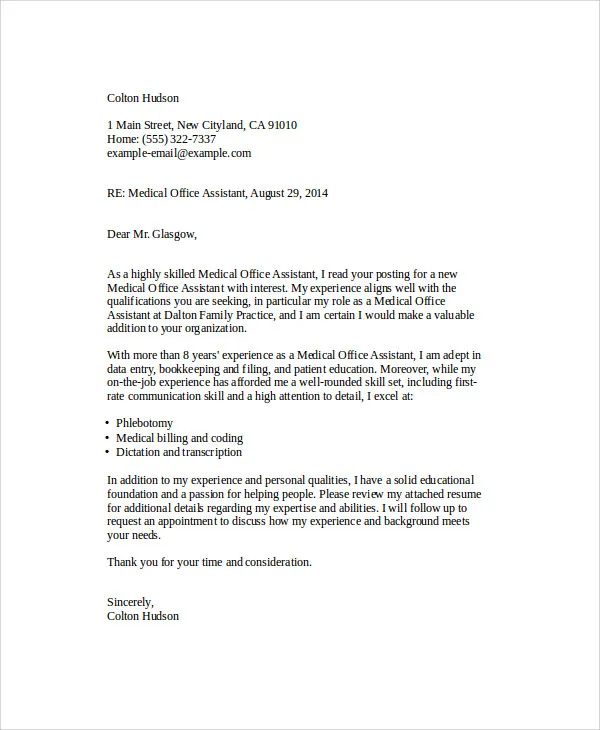
Emphasize your clinical skills, such as taking patient histories, measuring vital signs, assisting with examinations and procedures, and administering medications. Provide specific examples of your experience. For instance, instead of just stating that you took patient histories, describe how you ensured accuracy and completeness of patient records or how you handled difficult or sensitive situations with patients. Include any specialized skills like phlebotomy, EKG, or wound care certifications. These skills are highly valued in medical settings. Demonstrate your proficiency in these tasks and your ability to perform them safely and efficiently.
Administrative Skills
Highlight your administrative skills, including scheduling appointments, managing medical records, handling insurance claims, and communicating with patients and insurance companies. Mention any experience with electronic health records (EHR) systems and other software. For example, if you have experience with scheduling, detail how you effectively managed patient schedules to minimize wait times and maximize the efficiency of the clinic. If you have experience with billing, mention your accuracy in processing claims and resolving billing discrepancies. Demonstrating proficiency in administrative tasks showcases your organizational abilities and attention to detail, essential qualities for a medical assistant.
Technical Skills
Showcase your technical skills, such as your proficiency in using medical software, electronic health records (EHR) systems, and office equipment. Many clinics use specific software for managing patient data, billing, and other administrative tasks. Mention any specific EHR systems you have experience with, such as Epic, Cerner, or Allscripts. Highlight your ability to use office equipment, such as printers, scanners, and fax machines, and any other technical skills relevant to the job description. This demonstrates that you are a tech-savvy candidate who can quickly adapt to the clinic’s technological environment. Being familiar with this technology helps show your adaptability and ability to contribute to the efficiency of the clinic.
Quantifiable Achievements
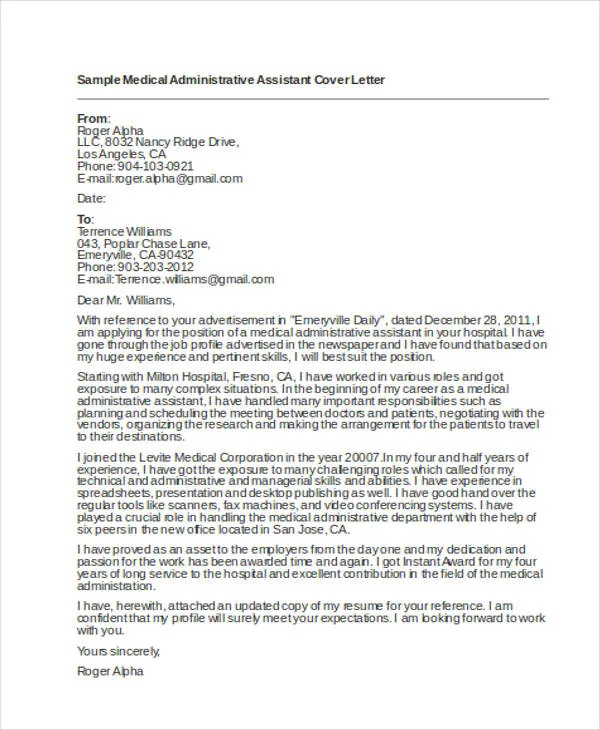
Whenever possible, quantify your achievements to make your cover letter more impactful. Use numbers and data to demonstrate your accomplishments and the value you brought to previous roles. For instance, instead of saying you improved patient satisfaction, state that you increased patient satisfaction scores by a specific percentage. Did you streamline any processes that resulted in cost savings or improved efficiency? If you managed patient flow, quantify how you reduced patient wait times. These details provide concrete evidence of your skills and highlight your ability to deliver results. By providing specific examples, you make a stronger case for your qualifications, helping you to stand out among other candidates.
Closing Paragraph
In the closing paragraph, reiterate your interest in the position and express your enthusiasm for the opportunity. Thank the employer for their time and consideration. Then, state your availability for an interview and how you can be reached. Reiterate your interest in the role and the clinic, and show that you have a clear understanding of what the role entails and how you can contribute to the team. End with a call to action, inviting the employer to contact you to schedule an interview. Make sure your enthusiasm and professionalism are evident.
Formal Closing and Signature
End your cover letter with a formal closing such as ‘Sincerely’ or ‘Best regards’. Leave space for your handwritten signature, and then type your full name below. If you are sending an electronic copy of your cover letter, you may omit the handwritten signature and use a typed signature instead. Ensure your closing is polite and professional, and your name is clearly visible. This final touch demonstrates your attention to detail and professionalism, reflecting positively on your candidacy and making a lasting impression.
Examples of Medical Assistant Cover Letters
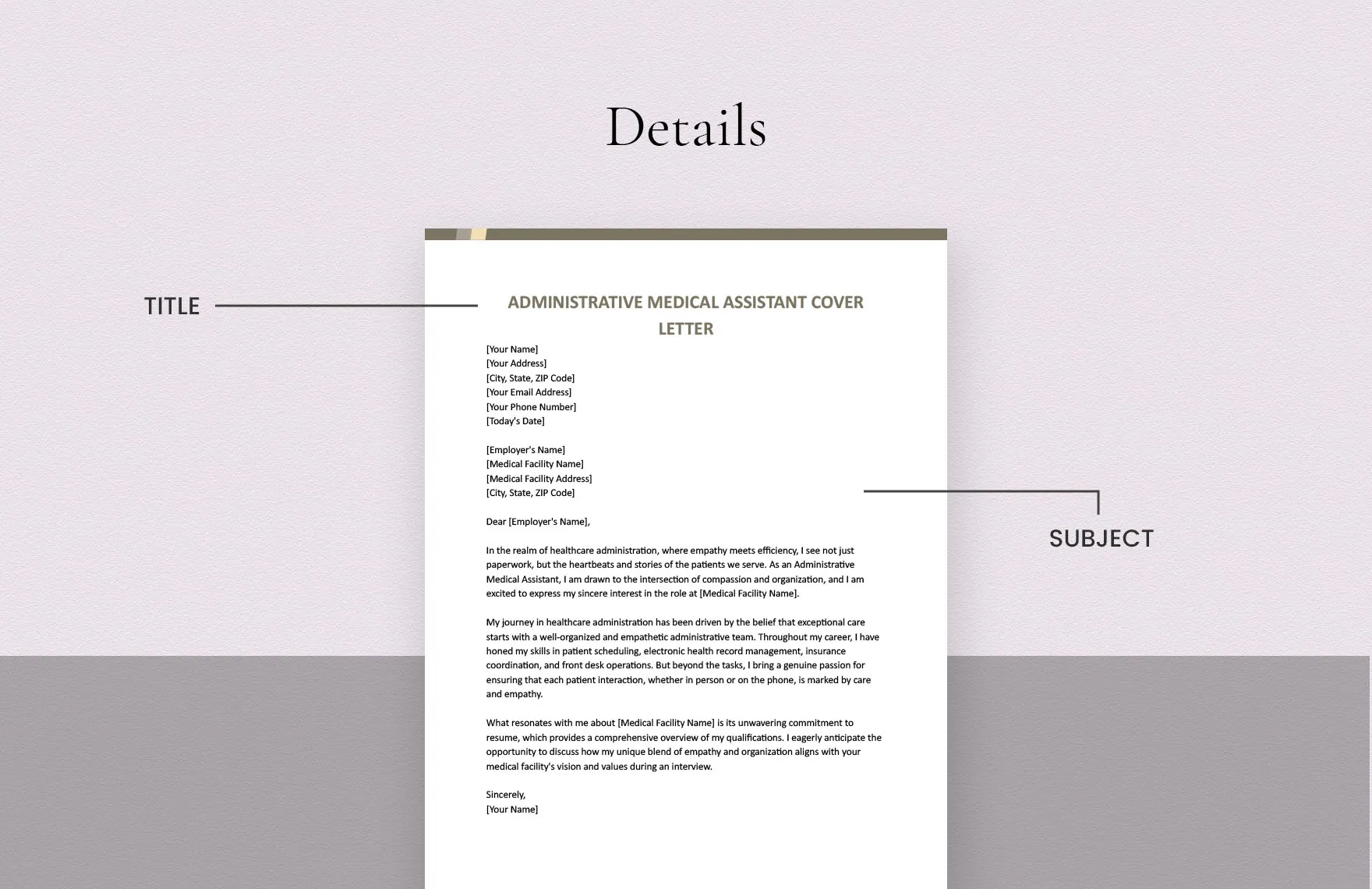
Reviewing different examples can help you understand how to structure and write a compelling cover letter that showcases your unique qualifications and experience. Adapt these examples to highlight your own skills and background, customizing each letter to align with the specific requirements of the job and the values of the healthcare provider. Tailoring your letter to each application ensures that you make a strong first impression, increasing your chances of securing an interview and ultimately landing the job.
Example 1 Recent Graduate
This example is tailored for recent graduates who may lack extensive work experience. Highlight your education, any clinical rotations or internships, and any relevant coursework. Emphasize your skills, eagerness to learn, and your understanding of medical assisting principles. Mention any certifications or training programs you have completed. Tailor the letter to the specific requirements mentioned in the job posting, and express your excitement about starting your career in healthcare.
Example 2 Experienced Medical Assistant
This example is suited for experienced medical assistants who have several years of experience. This letter should showcase a strong track record, focusing on quantifiable achievements and specific skills. Highlight your experience, including the number of years in the field and the range of clinical and administrative tasks you have performed. Quantify your accomplishments whenever possible, such as improved patient satisfaction scores, reduced wait times, or successful management of patient flow. This example must reflect the specific qualifications listed in the job description, emphasizing your expertise in relevant areas.
Example 3 Medical Assistant with Specialization
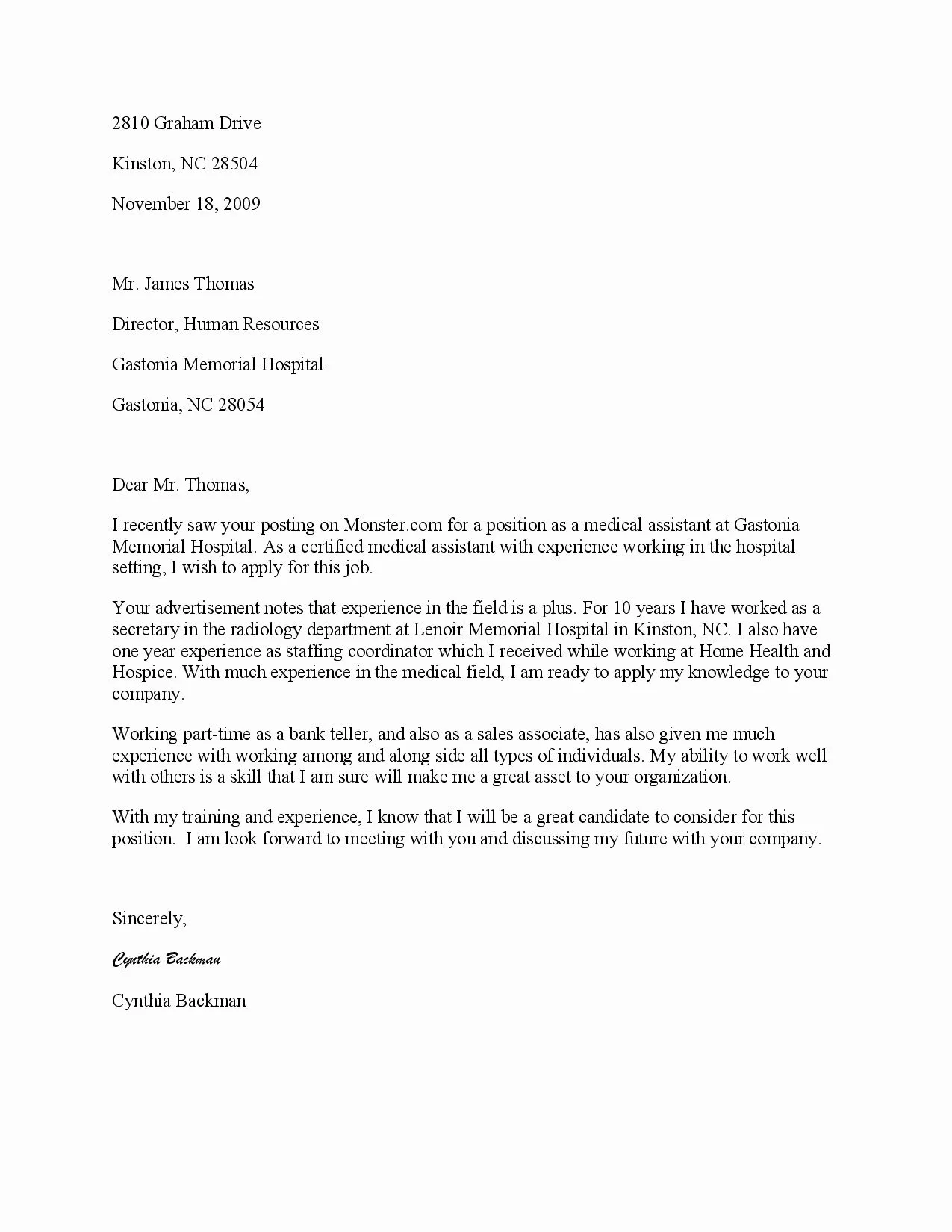
If you have a specialization (e.g., cardiology, dermatology), tailor your cover letter to highlight those specific skills and experience. Showcase your expertise in your area of specialization, emphasizing your proficiency in related procedures, technologies, and protocols. Demonstrate how your specialized skills can benefit the clinic. Mention any specialized training or certifications. The key is to align your skills and experience with the requirements outlined in the job description.
Key Takeaways and Best Practices
Following these best practices will help you write a cover letter that effectively showcases your qualifications. Tailoring your cover letter to each job application is vital for demonstrating your genuine interest and understanding of the role. Proofreading and editing are essential steps. Use a clear and professional format. By following these guidelines, you can create a compelling cover letter that captures the attention of hiring managers and significantly increases your chances of securing an interview.
Proofread and Edit
Before submitting your cover letter, carefully proofread it for any grammatical errors, spelling mistakes, and typos. Errors can detract from your professionalism and make a negative impression on the employer. Ask a friend or colleague to review your cover letter for you. It’s often easier for someone else to spot errors that you might have missed. Double-checking your letter ensures that your message is clear, concise, and error-free, demonstrating your attention to detail and professionalism.
Tailor to the Job Description
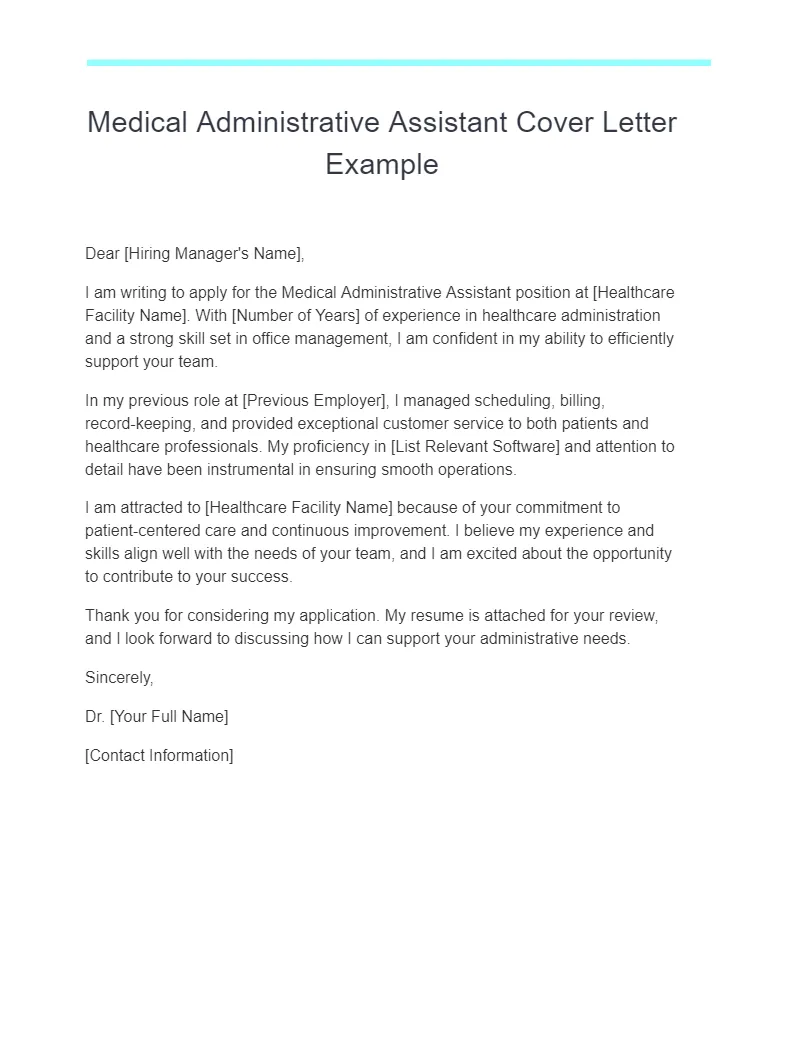
Customize your cover letter to each job application. Highlight the skills, experiences, and qualifications most relevant to the specific job requirements. Review the job description carefully and use keywords from the job posting to show that you meet the employer’s needs. Tailoring your cover letter will make you appear more qualified and show your understanding of the role. Personalizing your letter makes it more relevant and helps you stand out from generic applications.
Formatting Tips
Use a clean and professional format for your cover letter. Ensure your cover letter is well-formatted. Choose a readable font, such as Times New Roman or Arial, in a standard size. Use appropriate spacing between paragraphs and sections. Maintain a consistent style throughout the letter. Proper formatting makes your cover letter easy to read and helps the employer quickly find the information they need. The overall presentation of your letter contributes to its professionalism and effectiveness.
